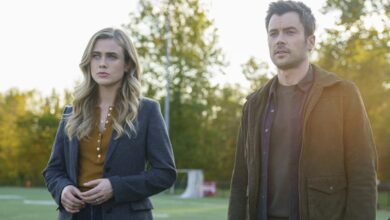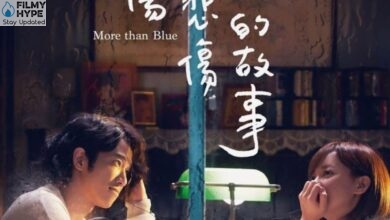House of the Dragon: Isn’t Too Dark! We Are Too Blin, Episode 7 Pushes Us To Reflect On Our Culture Of The Image
Is House of the Dragon Episode 7 dark, here what is the real reason behind it? It was spring 2019 when a long-awaited episode of Game of Thrones fans was aired, an episode that had been prepared as one of the most spectacular since its announcement. It was the third episode of the eighth and final season, entitled The Long Night, and was to show the final battle between the army of the living and that of the White Walkers. Where you go, precisely. At least most of the spectators, found themselves in front of more than 80 dark, dark minutes, so immersed in the darkness that they could not see anything. In our opinion it was at that moment, combined with a narrative choice that had not fully satisfied the fans, that a rift was created between the spectators and the series. An unresolved breakup will then get worse and worse in the last three episodes.
Three years later, the Game of Thrones brand seems to have managed to make peace with fans, thanks to House of the Dragon, the prequel series which, net of its indisputable quality, seems to want to reassure the historical fans of the saga, replying – sometimes a little too slavishly – what made the first seasons of Game of Thrones so perfect and unforgettable, according to collective memory. But the last episode aired, the seventh of the first season, reopened old wounds. The reason is obvious: even in this case, we are dealing with a long night, with an episode largely illuminated by faint moonlight. Too little to best show what was happening.

At least this is what the spectators said, who – as (too) often happens – poured their frustration on social media, some with malice, some with irony. Artistic and creative choice. So, HBO had to be justified as if it were guilty as if what was committed was a beginner’s mistake that must not be committed and which must be given a reliable explanation. As if we had forgotten a century of cinematographic art (an art that is based on the use of light and the choice of images) and the possibilities it offers us. Isn’t it that, perhaps, more than House of the Dragon is too dark, the spectator is too blind?
House of the Dragon: Let’s Clear Up The Mistake
Let’s break a lance in favor of the spectators. Before going into the heart of our discourse, it is good to separate the creative choice of work from the quality of transmission. Because the dark episode is a choice of the authors, but the bad quality with which we are often forced to watch the series is a problem over which we have no power, and very often the two things tend to get confused. When The long night (Game of Thrones 8×3) was broadcast for the first time at 3 am, simultaneously with America, something went wrong (with us and in the rest of the world). Image quality was overly compromised, with washed-out blacks, highly visible pixels, and overall poor video quality that left a hard-to-erase imprint in the minds of viewers. We quickly jumped to the conclusion that “dark = you can see badly”, confusing a technical problem with an artistic choice that, on the other hand, both thematically and stylistically, built a sense and a visual refinement unparalleled in the history of seriality.
It would then have been enough to look at the episode in quality not so excessively compressed (in blu-ray or a decent resolution in HD) to appreciate the photographic care. Of course, the viewer is not to blame in this case, although the lesson taught should be important: the video quality is important, especially today. It might seem like an obvious phrase, but in an era in which the reproduction of content passes from a television screen (high-end, with 4K, UltraHD, and Dolby Vision) to that of a smartphone, whose definition can vary according to how much we decide to spend (Netflix subscription plans, for example, vary from a cheaper SD package to the more expensive 4K) or the technologies used (our TV channels still struggle to change the quality standard and the results are visible), we have a duty not to be satisfied. Because TV, in the meantime, is evolving its language, experimenting based on the possibilities of new technologies.
The world through the screen. This is our editorial slogan, which describes a media reality that necessarily passes through the gaze. We are surrounded by content to see, including stories, posts, and viral videos, not to mention the now more and more numerous streaming platforms that constantly offer us, every week, hours and hours of content. Yet, the feeling is that our gaze gym is not working as we believe. We just look more, but not look better. The examples are all around us: the sometimes excessive length and somewhat dilated rhythms of the series we watch seem tailor-made to allow us to be distracted from time to time; at the cinema, we struggle with the desire to take the phone out of our pocket to check the notifications that may have arrived; on social media, the content we like is getting shorter and shorter. Like the way TikTok works (excellently), which gives us pills to swallow in a hurry.
The result, however, is that we have established a code of vision, in which everything must be clear, bright, and explicit. The speed with which we observe and we must understand its content must be high, immediate, automatic, and rhythmic like the thumb shaking on the screen. And this is how we gave up the time for reflection, the breath needed to digest images. And to patience, above all. Because not everything can be assimilated with the time of a scroll and, surely, we cannot live at these speeds.
“Too slow”, is said of something that is not fast enough by our standards (the last series to receive these phantom criticisms is The Lord of the Rings – The rings of power, which instead, thanks to its being able to be developed in five seasons, is dedicating the time to introduce the characters and to build an empathy necessary to continue the events in the best way), leaving us disappointed and angry, as if we were wasting time (and, you know, time is sacred). A sentence that appears more problematic than expected and that takes our alleged, eternal, and guaranteed innocence for granted. Isn’t it that, instead of a series that is too slow, we are too fast?
The Culture Of The Image
Feeling absolved automatically leads us to reject any creative choice, the fire that underlies and revives art, which moves away from what we canonically accept. And that, therefore, instead of being exploited as an element of discussion (even towards ourselves: why do we never want to question ourselves?) Is accused of being wrong. The same thing happened with Blonde, the movie on Netflix dedicated to the myth of Marilyn Monroe. Beyond the unquestionable judgment of the individual viewer on the film, we do not believe it is a coincidence that a divisive and provocative work like Dominik’s film causes discussion, precisely because it makes images the predominant engine of his story. And it is those images that carry forward the meaning of the narrative construction. Losing them would mean losing the sense of history. We forget a little every time, that cinema is the art of telling with images.
Even dark images, like those of House of the Dragon, in an episode whose darkness is symbolic and necessary to tell the situation of the characters, describing the world around them, building the tension and giving an hour of disconcerting cinematic beauty. And thank goodness there is a series like House of the Dragon (or Game of Thrones or The Rings of Power or a film like Blonde) that bring back images as a storytelling tool. Which is what cinema has been based on, since its inception. What, on the other hand, tends to remain more and more in the background is the culture of the image: we must go back to understanding what we are looking at, even at the cost of slightly slowing down the routine rhythm, trying to understand why we look at those images. Otherwise, no brightness holds:






